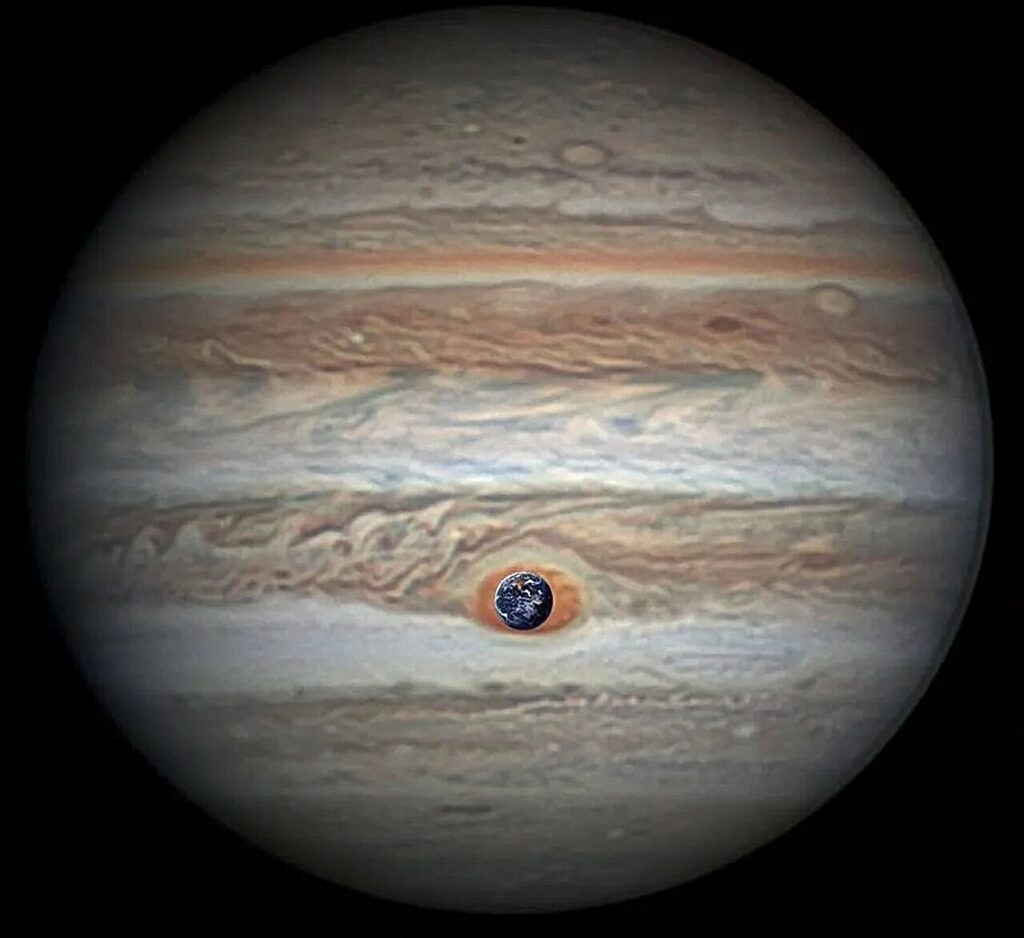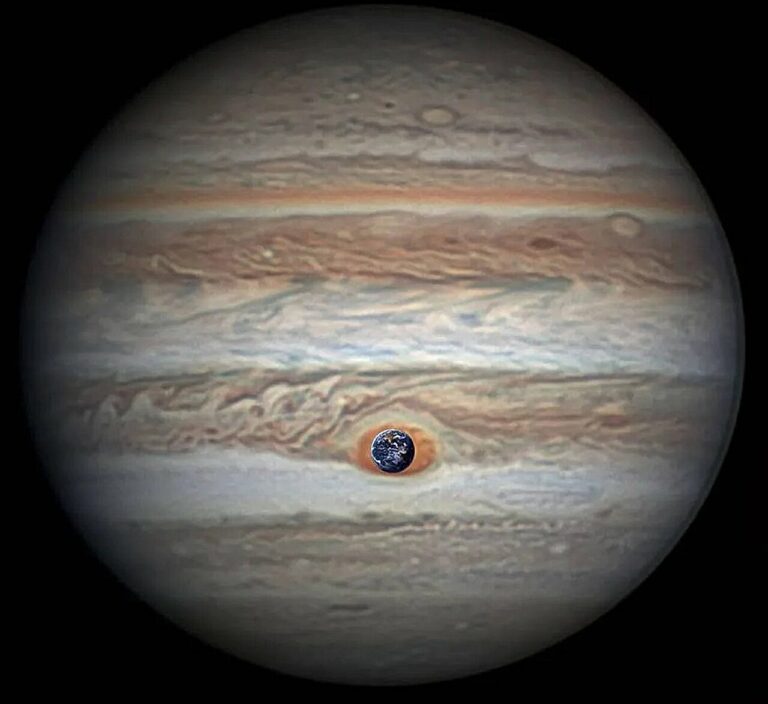Witness the ruler of planets: Observe Jupiter
Jupiter, the undisputed ruler of our solar system, stands out with its brilliance and visibility from Earth. Its immense size and distinct banded clouds contribute to its easy identification. Notably, Jupiter boasts moons that are comparable in size to planets, with Ganymede surpassing even the planet Mercury in magnitude. Remarkably, one can observe Jupiter and its moons with a simple instrument, just as Galileo did more than four centuries ago.
The title of the largest planet in our solar system is well-deserved by Jupiter. Its diameter is so vast that it could accommodate 11 Earths within it. To fill Jupiter with Earth-sized marbles, one would require over 1,300 Earths, and even then, it would not be sufficient. However, beyond its colossal size, Jupiter’s dominance over the outer solar system stems from its immense mass. If all the planets in our solar system were combined, their total mass would still be only half of Jupiter’s individual mass.
Jupiter’s tremendous mass has influenced the paths of numerous comets and asteroids. Its gravitational force can propel these small celestial bodies towards the inner solar system or capture them within its own gravitational pull. This phenomenon was famously observed in 1994 when Comet Shoemaker-Levy 9, previously drawn towards Jupiter in its orbits, collided with the gas giant’s atmosphere. The impact of its multiple fragments on Jupiter’s cloud tops was so intense that the resulting fireballs and dark impact spots were visible not only to NASA’s Galileo probe in orbit but also to observers on Earth.

Jupiter, the largest planet in our solar system, is easily visible to the naked eye during the night. Ancient astronomers meticulously documented its slow movements from night to night, making it a well-documented celestial object. It shines brightly in our nighttime skies, only surpassed by the moon, Venus, and occasionally Mars during its opposition. It is remarkable that despite being over 365 million miles (587 million km) away from Earth at its closest, Jupiter remains one of the brightest objects in the sky. Even more astonishing is the fact that it remains visible to Earthbound observers even when it is at its farthest distance of 600 million miles (968 million km).
Although Jupiter has a total of 95 known moons, only four of them, known as the Galilean moons, can be easily observed by observers on Earth using modest equipment. These moons, namely Io, Europa, Ganymede, and Calisto, were first observed by Galileo in 1610. When viewed through a telescope, these moons appear as faint star-like objects arranged in close proximity to Jupiter. Even with binoculars, one or two of these moons can be seen orbiting the planet. However, with small telescopes, all four of the Galilean moons can be observed if they are visible. Occasionally, these moons may pass behind or in front of Jupiter, or even cross paths with each other.
In addition to revealing Jupiter’s cloud bands, telescopes can also provide a glimpse of its famous Great Red Spot and the shadows cast by the Galilean moons as they pass between the sun and Jupiter. Documenting the positions of Jupiter’s moons throughout the evening and from night to night can be a fulfilling project. To assist with this activity, you can access an activity guide from the Astronomical Society of the Pacific.
Among the nine spacecraft that have explored Jupiter, NASA’s Juno mission currently orbits this magnificent planet. Since entering Jupiter’s orbit in 2016, Juno has been dedicated to investigating the enigmatic interior of this colossal world. Over the years, Juno’s mission has proven to be a resounding success, as the data collected by the probe has revolutionized our understanding of Jupiter’s atmospheric composition. Furthermore, Juno’s mission has been expanded to include the study of Jupiter’s large moons. Despite enduring the relentless radiation belts surrounding Jupiter, the resilient probe has conducted close flybys of the icy moons Ganymede and Europa, as well as the volcanic moon Io, since 2021.
This article is republished from PhysORG under a Creative Commons license. Read the original article.
Do not forget to share your opinion with us to provide you with the best posts !




0 Comments